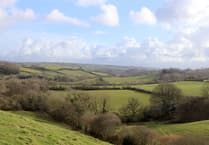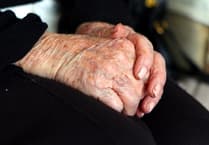ALMOST 200 people in Teignbridge have died from coronavirus since the pandemic reached the UK around two years ago.
Marie Curie is commemorating today, March 23 – two years after Prime Minister Boris Johnson announced the first UK-wide lockdown – as the National Day of Reflection.
The charity is urging people to come together to remember the lives of those lost to Covid-19, and support the millions of people across the UK who are grieving – as figures reveal the extent of the deadly toll in Teignbridge.
Figures from the Office for National Statistics show that in Teignbridge 191 deaths involving Covid-19 had been provisionally registered up to March 12.
Of these, 102 were in hospitals and 73 in care homes, while 15 occurred in private homes and one in a hospice.
It means deaths outside hospital settings accounted for 47% of the overall toll.
The figures include deaths that occurred up to March 4 which were registered up to eight days later.
ONS data is based on where Covid-19 is mentioned anywhere on the death certificate.
The deadliest week of the pandemic so far came in the seven days to January 22 2021, when 22 people lost their lives in Teignbridge.
The deaths in the area were among 10,595 registered across the South West up to March 12, and 159,419 across England.
Claire Collins, Marie Curie’s bereavement coordinator, said coming together on March 23 is a way to ‘reflect on our collective losses in a mindful way”.
She added: ‘There are still millions of people living with the deep trauma of losing a loved one during the last two years and we hope everyone finds comfort and embraces the day, whether you have had a close bereavement or not.’
A minute’s silence will be held at midday on Wednesday, March 23 to commemorate the day, and people are being encouraged to shine a light at 8pm or display flowers in their window to show support.
Separate figures from the UK coronavirus daily dashboard reveal the rate of deaths in Teignbridge within 28 days of a positive coronavirus test – a different measure than that used by the ONS.
On March 16, the cumulative death rate – which covers the entire pandemic – stood at 137 deaths per 100,000 people in the area – compared to 251.1 across England.
The Health Foundation said there have been notably higher excess deaths in the UK over the pandemic compared to the rest of Europe, with some communities particularly hard hit.
Dr Jennifer Dixon, chief executive of the charity, said: ‘Working age adults in the poorest parts of the country were almost four times more likely to die from Covid-19 than those in the wealthiest areas.
‘We owe it to those who lost their lives and their families to understand why, and how to build greater resilience against future threats to our health.
‘This means sudden threats like Covid-19 as well as slow burn threats like increasing obesity and mental health conditions.’
New data from the ONS shows that Great Britain’s avoidable mortality rate in 2020 – the first year of the pandemic – was the highest since 2010.
These are typically deaths among people aged below 75 from causes that are considered avoidable given timely and effective healthcare, or public health interventions.
However, the latest avoidable mortality counts also include deaths due to Covid-19.
Local authority figures, which span a three-year period, show that in Teignbridge, 823 deaths were considered avoidable between 2018 and 2020 – a rate of 185 per 100,000 people.
This was up from 182.7 between 2017 and 2019.




